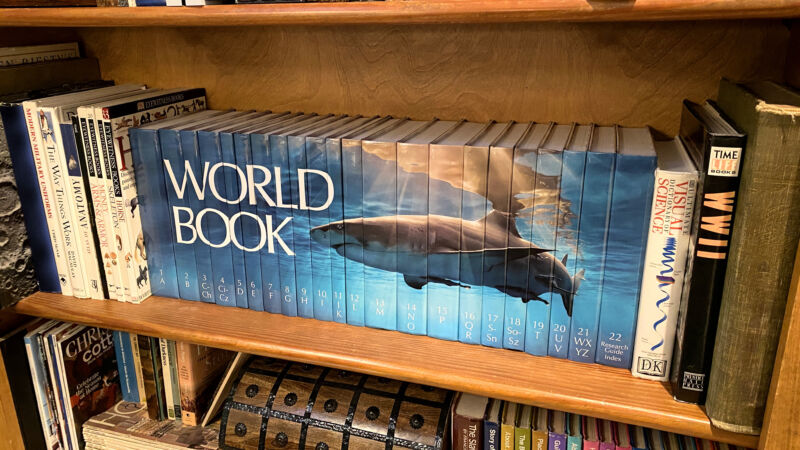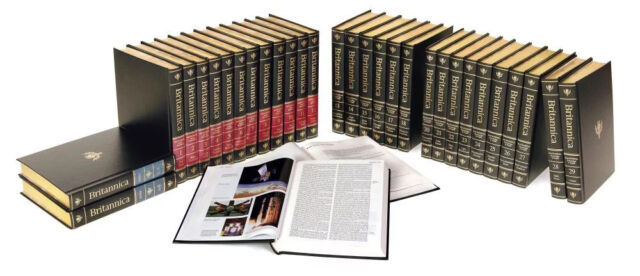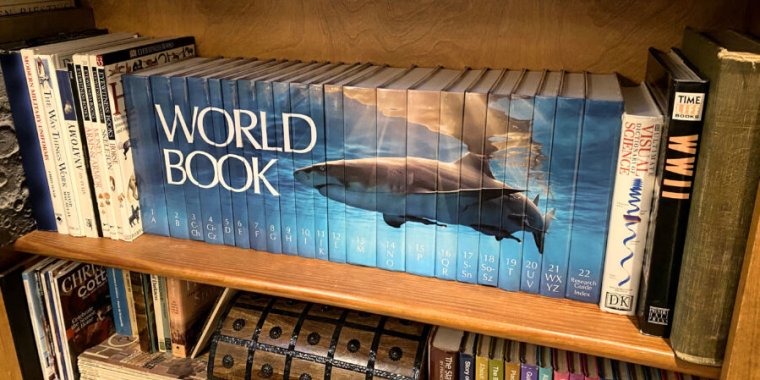
Ben Edwards
Today, many of us live online, where machine-generated content is beginning to litter the internet with misinformation and noise. At a time when it’s hard to know what information to trust, I felt elated when I recently learned that World Book is still printing an up-to-date encyclopedia of books in 2023. While the term “encyclopedia” is now almost synonymous with Wikipedia, it’s refreshing to see such a voluminous reference printed on paper. So I bought one, and I’ll tell you why.
Based in Chicago, World Book, Inc. first published an encyclopedia in 1917 and has released a new edition almost every year since 1925. The company, a subsidiary of Warren Buffett’s Berkshire Hathaway, claims its encyclopedia is “the only general reference encyclopedia still published today.” My research seems to support this claim; it is true even for other languages. Its biggest competitor of yesteryear, The Encyclopedia Britannica, ended its run in 2012 after 244 years in print.
As a nod to our current digital age, World Book also offers its encyclopedia as a subscription service via the web. Yet it is the printed version that mystifies and attracts my fascination. Why does it still exist?
“Because there’s still a demand for it!” Tom Evans, the editor-in-chief of World Book, told Ars via email.
Today, current information flows freely thanks to the Internet. It’s just a Google search away. Many people rely on Wikipedia, a non-profit collaborative resource, for reference purposes. Despite this, some people and organizations apparently still buy paper encyclopedias. Evans said sales of the print edition run “in the thousands” and that World Book always prints just enough copies to meet demand.

Encyclopedia Britannica
A World Book representative told Quartz in 2019 that the print encyclopedia was primarily sold to schools, public libraries, and homeschooling families. Today, according to Evans, public and school libraries are still the company’s main customers. “World Book has a loyal following of librarians who understand the importance of a general reference encyclopedia in print, accessible to all.”
As a child, our family owned a 1968 edition of World Book that I relied on for school reports and projects until my final exam in 1999, though I briefly used Microsoft Encarta on CD-ROM and a CompuServe encyclopedia in the 1990s. At the time, even with electronic references, instant, up-to-date information didn’t seem so important. We still worked largely at the speed of paper. While that concept seems foreign to us in our current world, there was a certain comfort in that inertia.
Speaking of slow, you can certainly not miss a paper encyclopedia set. Our family’s encyclopedia set used to occupy a large dedicated shelf in our family room. Like my old 1968 edition, the new print edition of World Book is a physically hefty reference. The 2023 version includes 17,000 articles spread over 14,000 pages in 22 volumes. The company says it contains more than 25,000 photos, illustrations, diagrams and maps.
All this paper-bound content can’t possibly be cheap, you might think. And of course you’re right. At a time when most information comes to us online for free (with strings attached, of course), it’s easy to be sticker shocked at the retail price of $1,199 for the 2023 edition of World Book, though shoppers may occasionally can be found for as low as $799 on Amazon (for comparison, the online subscription costs $250 per year). Earlier editions are available for much lower prices.
I know it might seem weird to prefer the print edition as you can get the same content in the online version in a space saving and portable format. But with the paper version, the World Book will always be yours. It cannot be secretly edited or deleted if the company needs the server space or goes out of business.
So I took the plunge.

